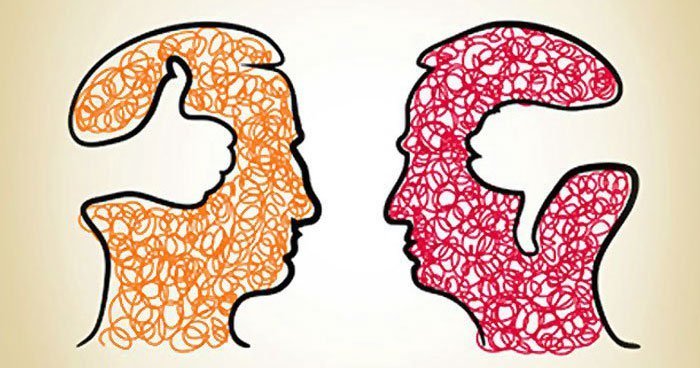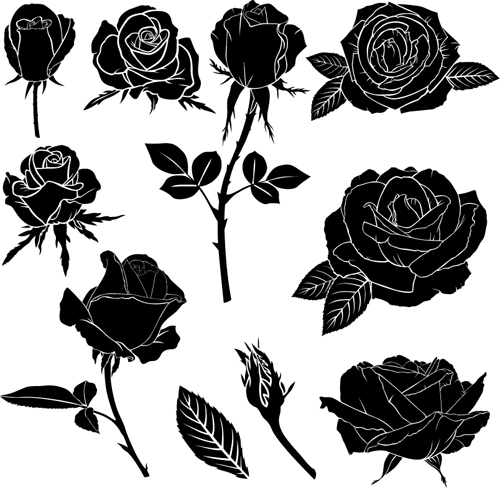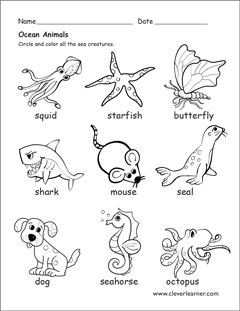Islamic art can be best described as a sacred art. It is an art that is made purely for the sake of spiritual and religious devotion and expression, rather than art that is used to express the artists own personal message or story. Unlike the terms Christian art, Jewish art, and Buddhist artwhich refer only to religious art of these faithsthe term Islamic art is not used merely to describe religious art or architecture but applies to all art forms produced in the Islamic world. The articles selected for Islamic Art and Beyond, the third in the set of four selections of articles by Oleg Grabar, illustrate how the author's study of Islamic art led him in two directions for a further understanding of the arts. Biomorphic Art The Art of Arabesque. Biomorphic art, (also known as Islimi, nebati, Arabesque) is one of the three distinct disciplines that underpins Islamic art (the other two being Calligraphy and Geometry). Search Islamic art and thousands of other words in English definition and synonym dictionary from Reverso. You can complete the definition of Islamic art given by the English Definition dictionary with other English dictionaries: Wikipedia, Lexilogos, Oxford, Cambridge, Chambers Harrap, Wordreference, Collins Lexibase dictionaries, Merriam. ISLAMIC ART Islam, among the world's major religions, is usually thought to have avoided significant aesthetic expressions of its major spiritual tenets. One will not find in Islamic art the artistic equivalents of Gothic cathedrals with their sophisticated reflection of Thomist thought, of Byzantine icons with their spiritual effectiveness, or of Buddhist sculptures with their involved. This classic book has been called the definitive work on Islamic art as far as the meaning and spiritual significance of this art are concerned, and is considered one of most important indepth studies of the subject ever conceived. Mahref is an Online Shop selling Arabic Calligraphy and Islamic Art Canvas, Framed Art, Print Art and Original Art, most are designed by Nihad Nadam. With the exception of the garden and its usual reference to paradise, vegetal motifs and patterns in Islamic art are largely devoid of symbolic meaning. Islamic art differs from that of other cultures in its form and the materials it uses as well as in its subject and meaning. Philipps (1915), for example, thought that Eastern art, in general, is mainly concerned with colour, unlike that of western art, which is more interested in form. The eightpoint star is widely used as a symbol in Islamic art. It is called khatim or khatim sulayman, seal of the prophets, as in signet ring. The phrase seal of the prophets is also used in the Koran and has particular ideological meaning for Muslims (Sarah Tricha, 2008). From a purely doctrinal viewpoint, geometrical designs, being free of any symbolic meaning (which is the case in Islamic art), could convey a general aura of spirituality without offending religious sensibilities. Meaning and design Meaning and beauty Detail from a 12th13th century Persian ewer. Art is the mirror of a culture and its world view. The art of the Islamic world reflects its cultural values. Islamic calligraphy is the artistic practice of handwriting and calligraphy, based upon the alphabet in the lands sharing a common Islamic cultural heritage. It includes Arabic Calligraphy, Ottoman. Islamic art history which have constructed the dominant secular gaze implicit in the Islamasculture approach, and analyzes how this approach has enhanced the perceived alterity of Islam by defining Islamic art primarily in terms of points of CARIO Calligraphy as a peculiar form of Islamic artistic expression has its enthusiasts that are very keen to keep the art alive and to qualify young generations of calligraphers interested in learning the rules of the different schools of Arabic script. About Islamic Art You can overcome agonizing over the small number of items in your religious collection. Islamic arts are a compelling solution to enrich any religion and spirituality themed collection. Islamic countries have developed modern and contemporary art, with very vigorous art worlds in some countries, but the degree to which these should be grouped in a special category as Islamic art is questionable, although many artists deal with Islamrelated. Iconoclasm definition is the doctrine, practice, or attitude of an iconoclast. the doctrine, practice, or attitude of an iconoclast See the full definition First Known Use of iconoclasm. 1797, in the meaning defined above. In his first post for his regular column on Daily AD, Mitch Owens discusses geometric patterns in Islamic Art. This is the inaugural post for my regular column on Daily AD. Islamic art is a vibrant and distinctive form of Art. Unlike Christian art, Islamic art is not constrained to religious work, but includes artistic traditions in the Muslim culture. Because of the strict ruling against drawings of human or animals which might result in idol worship, Islamic art developed a distinctive character makes use of. The Chinese excelled in art, but their knowledge of colour too was deficient. In the Vedas of the Hindus there is no distinction between green and yellow, or black and blue. Hundreds of mantras of the Vedas refer to the sky, but its colour is not described as blue. 4 Ulama is refers to the educated class of Muslim legal scholars engaged in the several fields of Islamic studies 5 Imamah is a scarf or turban that the Muslim men wear during prayer or in their daily life 6 Sharif is a traditional Arab title in origin, the word is an adjective meaning noble, highborn. The genius of Islamic calligraphy lies not only in the endless creativity and versatility, but also in the balance struck by calligraphers between transmitting a text. The idea of an Islamic art is a distinctly modern notion, developed not by the culture itself but by art historians in Europe and America trying to understand a relatively unfamiliar world and to place the arts created there into the newly developing field of art history. In the Islamic world, dynasties fractured and began to develop distinctive styles of art. For the first time, disparate Islamic states existed at the same time. And although the Abbasid caliphate did not fully dissolve until 1258, other dynasties began to form, even before its end. The role played by water in Islamic architecture is as symbolic as it is practical. Water is not only used in a purely utilitarian manner: after all, it is the source of life and thus carries an important symbol not only for Islam, but also for many cultures that associate it with life, purification and sustainability. The reason is simple: Islamic art stems from and is inspired by the teachings of Islam, which all. Reading visual cues in Islamic art. Islam is a faith revealed to the Prophet Mohamed on the Arabian Peninsula in the early 7 th century, whose motivation was to heal the spiritual rift between Judaism and Christianity. All these three faith traditions, Numbers and their meaning. The very idea that an image or a sculpture represents something other than itself has often been interpreted by orthodox Muslims as irreconcilable with the central message in Islam: There is no god but God. For this reason, one could say that all art made in the Islamic world must be considered devoid of. Islam (Arabic: , AlIslam (Submission) ) is a religion that believes in one God (Allah). All of its teachings and beliefs are written out in the Quran (also spelled Qur'an or Koran), the holy scripture of Islam. Believers of Islam are called Muslims. They believe that the Quran was spoken to Muhammad by the angel Jibril, and that it is the word of Allah. Islamic Art is not the art of a particular country or a particular people. It is the art of a civilization formed by a combination of historical circumstances; the conquest of the Ancient World by the Arabs, the inforced unification of a vast territory under the banner of Islam, a territory which. Islamic Art Collection About the Collection Collection Highlights Search the Collection Scholar Favorites About Islamic Art About Islamic Art The phrase Islamic art generally refers to arts that are products of the Muslim world, diverse cultures that historically extended from Spain to Southeast Asia. This Extensive Volume Has 9 Chapters. Religions, Art And Culture, The Book, Calligraphy, Painting, Architecture, Gardens. A Matter Of State, The Arts Of Good Living. Islamic calligraphy art is the artistic practice of handwriting and calligraphy, based upon the alphabet in the lands sharing a common Islamic cultural heritage. Meaning and Design of Islamic Art Art is the mirror of a culture and its world view. The art of the Islamic world reflects its cultural values, and reveals the way Muslims view the spiritual realm and the universe. For the Muslim, reality begins with and centers on Allah. This feature is not available right now. Symbolic Meaning David Wade April 2014 As indicated previously, in Theories, Problems and Evidence, it is tempting to ascribe symbolic meaning to the traditional repertoire of forms that I have characterized as the Islamic decorative canon, i. the repertoire of calligraphic, arabesque and geometric elements that that can be found in. Considered as one of the most famous examples of Islamic art, the Alhambra is the culmination and grand finale of medieval Islamic culture on the Iberian Peninsula. The meaning of Arabesque Arabesque is an element of Islamic art usually found decorating the walls of mosques, the arabesque is an elaborative application of repeating geometric forms that often echo the forms of plants and animals. This article tries to explain the meaning of Islamic art and its contribution to ongoing important discourse on creation, both as science and art. It has stated that Islamic culture is fiction and doesnt exist at all; it advocates that one cant evidently speak of Islamic pedigree without just putting some mere assumption when mentioning it to be sole concept. Using Islamic Art as a basis to learning shapes and what you can do with those shapes. A crosscurricular lesson for teachers who wish to inspire children with geometry within a cultural contact that may be different from their own. [note 8, In Islamic art the ban against illusion served two functions: 1) it produced universal forms that omitted specific imagery and thus, included in its audience all of Islam's diverse subjects. In Islamic art the geometric figure of the circle represents the primordial symbol of unity and the ultimate source of all diversity in creation. The natural division of the circle into regular divisions is the ritual starting point for many traditional Islamic patterns, as demonstrated in the drawings below. The Meaning of Islamic Art has 16 ratings and 0 reviews. Explorations in Religious Symbolism and Social Relevance. MEANING OF ART For details of differing types of visual and fine arts, see: MeaningDefinition of Art. However, on further analysis, these definitions relate to religious content, rather than religious quality. Known as an expert on Islam, Sufism, and Islamic arts crafts, Burckhardt presents indepth analyses of seminal examples of Islamic architecture, from Spain and Morocco to Persia and India. He examines Koranic calligraphy and illumination, arabesque, carpets and rugs, Persian miniatures, and much more while making illuminating comparisons with Christian, Hindu, and Buddhist art. What is the meaning of Islamic art Find out more explanation for: 'What is the meaning of Islamic art' only from this channel. Information Source: google The Meaning Behind Islamic Art and Architecture Islamic art and architecture reflect how Muslims relate to the universe. It is a spiritual representation of nature, not a replication of it. The term Islamic art not only describes the art created specifically in the service of the Muslim faith (for example, a mosque and its furnishings) but also characterizes the art and architecture historically produced in the lands ruled by Muslims, produced for Muslim patrons, or created by Muslim.











